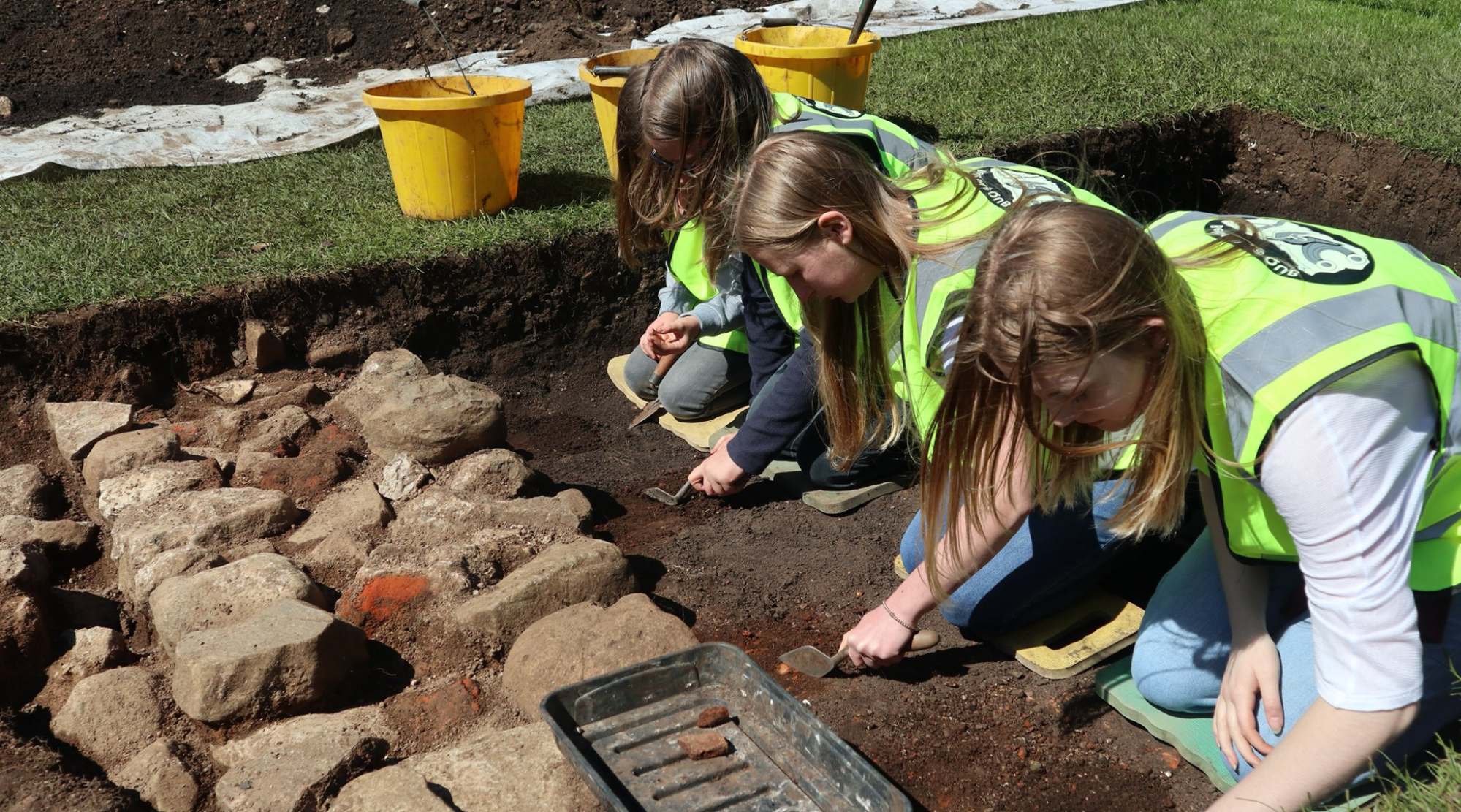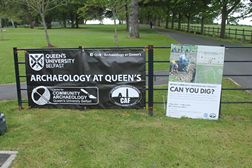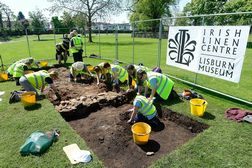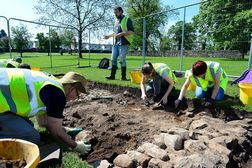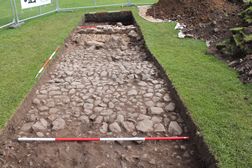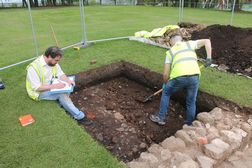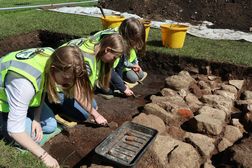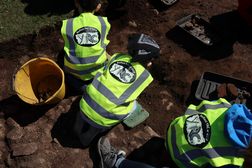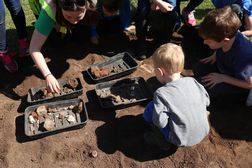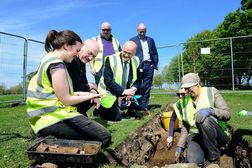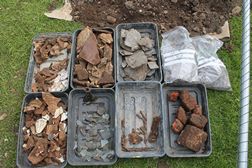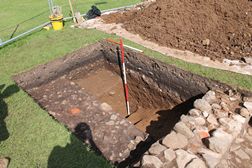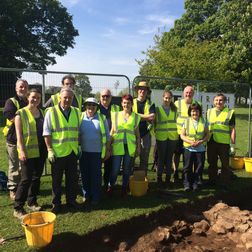Moira Demense
During the exceptionally dry conditions in Summer 2018 a wide range of new archaeological monuments were identified across Ulster, including one in Moira Demesne, County Down. This site was the location of an important estate and big house, known as Moira Castle, in the 18th century. An estate map from c.1780 that shows the location of the Georgian house and associated ancillary buildings within the planned landscape, though only the outlines of the buildings are marked. The house was later abandoned and subsequently demolished by 1830 and the demesne is now a public park owned by Lisburn and Castlereagh City Council. An earlier, mid-17th century, fortified house is also recorded as having been built somewhere in the same landscape but its exact location is unknown.
To investigate the Moira demesne crop marks a geophysical survey was carried out by Dr Siobhán McDermott of the Centre for Archaeological Fieldwork (CAF) at QUB in March 2019, on behalf of the Lisburn and Castlereagh City Council. The survey recorded three interesting sub-surface anomalies. To find out what these were the CAF, in conjunction with Lisburn Museum, carried out a two-week community-based archaeological excavation at the site in May 2019, directed by Ruairí Ó Baoill. This excavation was also commissioned and funded by Lisburn and Castlereagh City Council.
Three trenches were excavated within the demesne. One of the trenches, located in the presumed environs of the Georgian house, uncovered a masonry wall and surface that may be the remains of an ancillary building close to the main house. A second trench revealed levelling deposits elsewhere within the demesne/park. The third, and largest trench, uncovered 18th century clay surfaces, a masonry wall with an associated substantial cobbled surface that included two drains, and a thick midden deposit. These features all relate to an 18th century building within the demesne, possibly a stable block. Among the 18th century finds recovered from the excavation were a coin from 1773, glazed pottery, floor and roof tiles, window and bottle glass, perforated roof slates, iron nails and other metalwork, fragments of clay tobacco pipes, and animal bones and oyster shells (the remains of people’s meals). At the limits of the large trench, below the demesne horizons, a portion of a large ditch from an earlier period of human activity on the site was uncovered. The ditch might either be part of a defensive feature or possibly a property boundary. Charcoal was obtained from the ditch fills and it is hoped that a date for the feature can be obtained in the near future.
The 2019 Moira Demesne excavation was a huge success. It proved that that substantial portions of historic masonry and other features from the 18th century estate, and also features from earlier periods, survive just below the modern surface of the park.
The Moira Demesne excavation was the 22nd community-based archaeological excavation conducted by the QUB since 2011. A total of 375 people either directly participated in or visited the excavation while it took place and on an Open Evening that was held. The vast majority got an opportunity to take part in the excavation under the supervision of the professional CAF archaeologists. These included 90 volunteers, 236 schoolchildren and teachers/ teaching assistants from local schools and 15 children from QUB Young Archaeologists’ Club.
